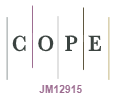Estimates of the eligible population for Australia’s targeted National Lung Cancer Screening Program, 2025–2030
Stephen Wade A , Preston Ngo A , Yue He A , Michael Caruana A , Julia Steinberg A , Qingwei Luo A , Michael David A B , Annette McWilliams C , Kwun M Fong D E , Karen Canfell F and Marianne F Weber A *A
B
C
D
E
F
Abstract
Australia’s National Lung Cancer Screening Program will commence in July 2025, targeted at individuals aged 50–70 years with a 30 pack-year smoking history (equivalent to 20 cigarettes per day for 30 years), who either currently smoke or have quit within the past 10 years. We forecasted the number of screening-eligible individuals over the first 5 years of the program using data from the 2019 National Drug Strategy Household Survey and the 2022 Australian Bureau of Statistics population projections. Multiple imputation integrated with predictive modelling of future or unmeasured smoking characteristics was used to address missing data and, simultaneously, to project individuals’ smoking histories to 2030. In 2025, 930 500 (95% prediction interval 852 200–1 019 000) individuals were estimated to be eligible, with the number meeting the criteria declining slightly during the years 2025–2030 in all Australian jurisdictions. Overall, 26–30% of those eligible will have quit smoking, and 70–74% will currently smoke. These estimates can be used in resource planning and as an indicative denominator to track participation rates for the program over time.
References
1 Cancer Australia. Lung cancer screening; 2024 [cited 2024 May 6]. Available from: www.canceraustralia.gov.au/about-us/lung-cancer-screening
2 Australian Government Department of Health and Aged Care. National Lung Cancer Screening Program; 2024 [cited 2024 Nov 28]. Available from: www.health.gov.au/our-work/nlcsp/how-it-works
3 Australian Institute of Health and Welfare. National Drug Strategy Household Survey 2019. Drug statistics series no. 32. PHE 270. Canberra, ACT: AIHW, 2020 [cited 2024 Nov 28]. Available from: www.aihw.gov.au/reports/illicit-use-of-drugs/national-drug-strategy-household-survey-2019/contents/summary
4 Australian Bureau of Statistics. Population projections, Australia, 2022 (base) – 2071; 2018 [cited 2024 June 5]. Available from: www.abs.gov.au/statistics/people/population/population-projections-australia/2022-base-2071#data-downloads
5 Kish L. Open Library. Survey sampling; 1965 [cited 2024 June 21]. Available from: openlibrary.org/books/OL5947497M/Survey_sampling
6 Manners D, Hui J, Hunter M, James A, Knuiman MW, McWilliams A, et al. Estimating eligibility for lung cancer screening in an Australian cohort, including the effect of spirometry. Med J Aust 2016; 204(11): 406.
| Crossref | Google Scholar |
7 Weber M, Yap S, Goldsbury D, Manners D, Tammemagi M, Marshall H.. Identifying high risk individuals for targeted lung cancer screening: independent validation of the PLCOm2012 risk prediction tool. Int J Cancer 2017; 141(2): 242-53.
| Crossref | Google Scholar |
8 Tammemägi MC, Darling GE, Schmidt H, Walker MJ, Langer D, Leung YW, et al. Risk-based lung cancer screening performance in a universal healthcare setting. Nat Med 2024; 30(4): 1054-64.
| Crossref | Google Scholar |
9 Goodley P, Balata H, Alonso A, Brockelsby C, Conroy M, Cooper-Moss N, et al. Invitation strategies and participation in a community-based lung cancer screening programme located in areas of high socioeconomic deprivation. Thorax 2023; 79(1): 58-67.
| Crossref | Google Scholar |
10 Bandi P, Star J, Ashad-Bishop K, Kratzer T, Smith R, Ahmedin J.. Lung cancer screening in the US, 2022. JAMA Intern Med 2024; 184(8): 882-91.
| Crossref | Google Scholar |


